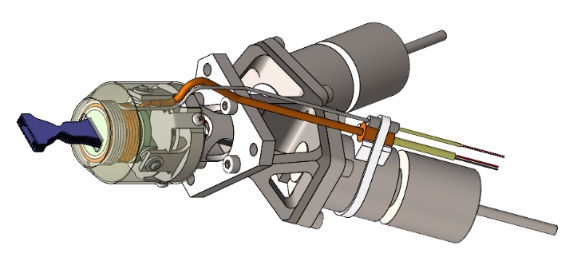ICE propulsion offers a game changing high thrust propulsion system ideal for satellites of all sizes. It is an attractive replacement for hydrazine, capable of providing high thrust in combination with the natural high specific impulse of hydrogen/oxygen catalytic combustion. Beyond this, advanced manufacturing techniques enable both mass, and low-cost construction ideal for constellations.
ICE thruster units consist of the following sub-systems:
Each component of the system has its own family allowing the propulsion system to be fully modular, scalable, and tailored to all customer requirements and platform sizes.
The system utilises water as a propellant. This enables a high storage density, as well as a significant reduction in cost and complexity of launch site activities when compared to heritage chemical propulsion devices such as hydrazine. Hydrogen and oxygen can then be manufactured in orbit using an electrolyser, this manufactured hydrogen and oxygen are then fed into a thruster chip, the thruster chips then combusts the hydrogen and oxygen to produce thrust.
URA Thrusters have developed a range of thrusters encapsulating a wide range of thrusts from 10 mN to 1 N. We have also developed a modular electrolyser technology to fit whatever power budget is needed for the propulsion system. In combination with a range of tank sizes, this enables an endless combination of total impulse, peak thrust, and power availability suitable for any platform.

| Thruster Head | Thrust (mN) | Isp (s) | Power (W) | Dimensions (U) | Mass (kg) | Propellant | Market Entry |
|---|---|---|---|---|---|---|---|
| ICE-10 | 10 | 310 | 5 / 25 – 800 | < 4 | < 8.2 (Wet) | H2O | 2024 |
| ICE-1000 | 1000 | 310 | 5 / 25 – 800 | < 70 | < 60 (Wet) | H2O | 2024 |
| ICE-50 | 50 | 310 | 5 / 25 – 800 | ||||
| ICE-200 | 200 | 310 | 5 / 25 – 800 |
MUIR, CHARLES, and AARON KNOLL. “CATALYTIC COMBUSTION OF HYDROGEN AND OXYGEN.” General Issue (2019): 2.
Staab D, Longhi E, Garbayo A, Swar K, Segovia-Guerrero L, Larsen H, Muir C, Knoll A, Ma C, Wilson S, Sadler J, Sheppard-Alden J, Rodier Cet al., 2021, ICE: A MODULAR WATER ELECTROLYSIS PROPULSION SYSTEM, SPACE PROPULSION CONFERENCE 2020+1.